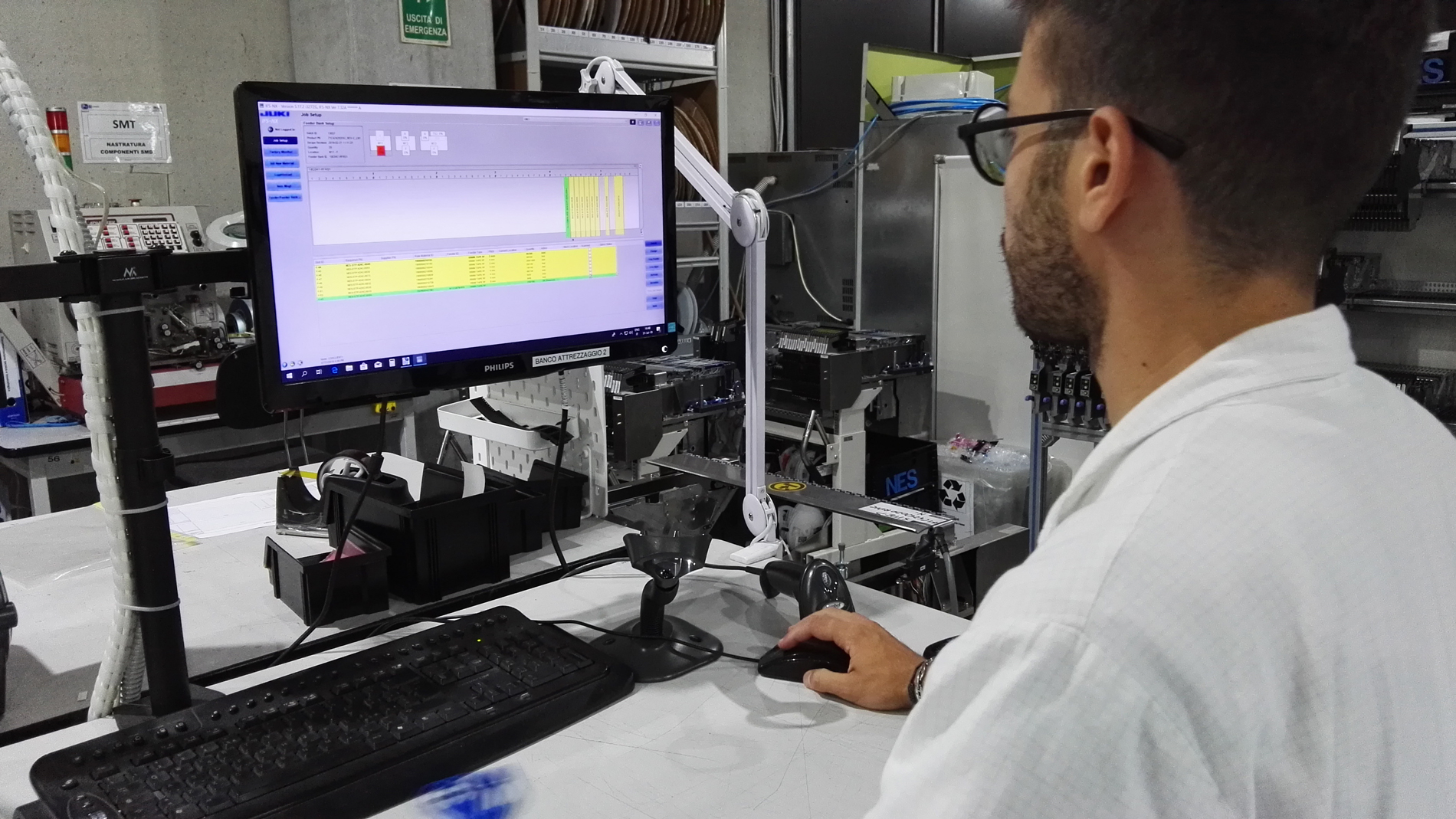
Continuous investment in equipment, software and people is central to NES' future strategy. Only the constant growth of these three pillars enables us to remain successful and up-to-date in an industry that is always on the move. In the production of technologically sophisticated electronic assemblies in the high-mix, low-volume segment, NES focuses on safety, reliability, high professionalism, flexibility combined with a passion for electronics. The company is certified according to ISO 9001, ISO 9100, IRIS and ATEX and manufactures for 69 different customers in railway technology, defense, aerospace, telecommunications, high frequency technology, industrial electronics and building technology. The company has been working for several years with Chinese, Spanish, German and Swedish partners and has a joint venture with a supplier for the German automotive industry. Projects start with the product development of the customers from the perspective of manufacturability, so that they can design and industrialize a product that is simple, economical and of high quality. For the manufacturer, this means always being at the cutting edge of technology and investing in equipment, processes and employees. Technologically, this means the
fast component placement and great flexibility with a machine. After a selection process with several suppliers for the new production line, the decision was made in favor of the JUKI RS-1 (Fig. 1). In the benchmark with the two other Pick & Place machines, it delivered the best result in the decision criteria speed, precision, reliability, warranty and costs.
Only with the right partners is it possible to think about reorganizing production and to obtain advice on how to significantly increase the efficiency of production – that is added value.
The RS-1 machines feature the Takumi Head placement head with fully automatic height adjustment. This saves time, because in the past the placement head had to be mounted so high that the highest component had to be placed on the printed circuit board. In the case of flat components, this means an unnecessarily long traverse path. Now a fully automatic centering system individually adjusts the placement head to the component height in six different height positions during operation. This means that the placement head is as close as possible to the feeders and the printed circuit board. This means that the Z-axis travel is reduced to a required minimum and the cycle time is optimized. The Takumi Head with eight vacuum pipettes achieves an assembly speed of 42,000 components/h. The Z-axis travel is reduced to a required minimum and the cycle time is optimized. The component spectrum ranges from SMD components from 0201 (metric) to 74 mm (square) or 50 × 150 mm (rectangular) edge length and up to 25 mm component height. Each vacuum pipette has RFID tags for control and traceability. With the new offline teach camera and JaNets/NPI Plus software, the RS-1 offers easy data entry for faster programming of all component shapes. Another novelty are the new RF feeders. They are smaller and lighter with the same positioning accuracy. The smaller width allows up to 112 feeder inputs with 8 mm feeders.

Traceability is an important topic at NES - for customers and their own cost management as well as process optimization. This is why the traceability software IFS-NX (intelligent feeder system with contactless RFID) from JUKI is used here for setup control and complete traceability (Fig. 2). The software checks the part numbers required for the rolls used to ensure that the correct components are loaded. Production cannot start if a component is faulty. Each feeder position is automatically detected when the feeder bench is positioned. Compliance is also checked every time a component is refilled. For full traceability, the batch numbers of the components are recorded and linked to the serial number of the printed circuit board on which they are mounted.
Offline feed setup using feed carts reduces errors and shortens overall setup time by guiding operators through the process. The batch numbers of the components can be recorded during production and linked to the serial number of the printed circuit board on which they are mounted to ensure complete and accurate traceability. IFS-NX records and manages the maintenance and inspection history of the feeders. Maintenance schedules are created and alerts can be set based on actual usage, including picking cycles, operating hours and picking errors.
Installation of hardware and software was the responsibility of I-Tronik, JUKI's distributor in Italy. For ten years now, I-Tronik has been inviting its customers once a year to a three-day workshop with live presentations. "Today, it is important to provide continuous feedback to suppliers and partners to help them improve their offerings." says Michele Mattei, sales director of I-Tronik. News, technical details and developments in the market are shown directly and the requirements for electronics manufacturers are discussed. In this way, the technical needs of the Italian market can be identified, the best technical solutions sought and then implemented in projects such as these.
Tags
- EMS
- Assembly
- Production
- Components
